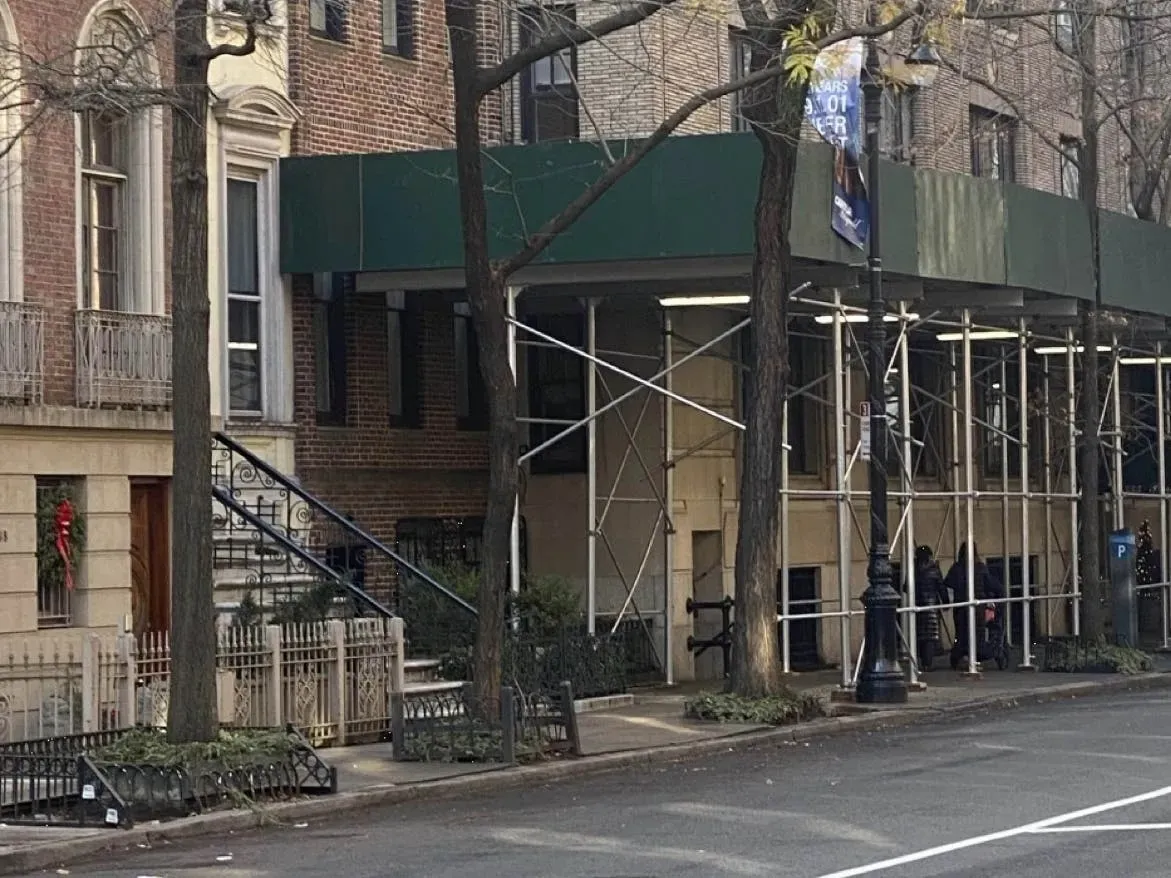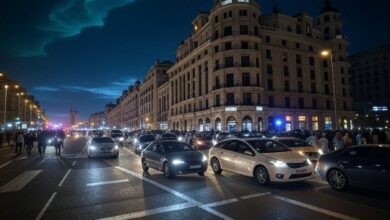NYC Scaffolding Lawsuit Challenges Property Rights

The NYC scaffolding lawsuit has emerged as a critical legal battle that underscores the ongoing tensions between landlords and city safety regulations. This class action lawsuit, initiated by four landlords, argues that the persistent presence of scaffolding sheds from neighboring properties constitutes a violation of their property rights as defined by the Fifth Amendment. These sheds, designed to protect pedestrians from potential construction hazards, often overstay their welcome, encroaching on adjacent properties and creating significant public safety concerns. Landlords claim that they should not bear the costs associated with scaffolding that is not of their doing, and they are demanding compensation from city officials. The lawsuit highlights key issues surrounding property ownership and governance in bustling New York City, where the balance of safety and private rights is continually being tested.
The ongoing legal dispute over temporary constructions known as scaffolding sheds in New York City illustrates a growing discontent among property owners concerning municipal regulations. As these structures become common fixtures in urban neighborhoods, many landlords feel their rights are infringed upon when excess scaffolding extends onto their premises. The initiated class action suit emphasizes the struggles faced by these owners, who argue that they deserve recompense for the loss of use and enjoyment of their properties due to ongoing public safety measures. This case not only raises fundamental questions about property rights but also highlights the challenges of managing urban infrastructure in a densely populated area. A significant conversation is unfolding around how to better balance public safety needs with the rights of private property owners in the city’s vibrant yet complicated ecosystem.
Understanding the NYC Scaffolding Lawsuit
In the heart of New York City, a group of landlords has banded together to launch a class-action lawsuit aimed at challenging the city’s scaffolding regulations. The plaintiffs assert that the persistent presence of scaffolding sheds not only violates their property rights but also constitutes a form of governmental taking under the Fifth Amendment. As these structures frequently extend onto private property, the landlords argue that they are unfairly forced to bear the consequences of their neighbors’ construction woes. This legal action underscores the ongoing tension surrounding public safety and landlords’ property rights in an environment where construction is a constant factor.
This NYC scaffolding lawsuit is particularly reflective of broader themes in urban property disputes, where landlords feel squeezed by city regulations that prioritize public safety over private property interests. The class-action format of the lawsuit indicates that many landlords share similar grievances, arguing that the city has a responsibility to compensate them for the inconvenience and financial burden caused by these public safety measures. As New York City continues to grow and evolve, the resolution of this lawsuit could set a significant precedent regarding how the city balances the need for safety with the rights of property owners.
Frequently Asked Questions
What is the NYC scaffolding lawsuit involving landlords and property rights?
The NYC scaffolding lawsuit is a class-action lawsuit filed by landlords against the City of New York, claiming that their Fifth Amendment property rights have been violated due to persistent scaffolding sheds from neighboring properties encroaching on their land. The lawsuit argues that the city has failed to compensate these property owners for the ongoing infringement caused by these sidewalks sheds, which are mandated for public safety.
How does the NYC scaffolding lawsuit relate to public safety concerns?
The NYC scaffolding lawsuit highlights public safety concerns as the city mandates scaffolding sheds to protect pedestrians from hazards associated with construction. However, landlords argue that while these sheds are meant for public safety, they unfairly infringe upon their property rights and can remain for extended periods, disrupting their properties and deterring potential tenants.
What are the grounds for the NYC scaffolding class action lawsuit?
The grounds for the NYC scaffolding class action lawsuit include allegations that the city systematically engages in taking property from landlords without compensation due to the presence of sidewalk sheds. The plaintiffs claim these encroachments negatively impact their properties and violate their rights under the Fifth Amendment.
What compensation are landlords seeking in the NYC scaffolding lawsuit?
Landlords involved in the NYC scaffolding lawsuit are seeking compensation from the city for past and ongoing takings of their property. They argue that the presence of scaffolding from neighboring buildings has infringed upon their rights and affected the usability and value of their properties.
How long do scaffolding sheds typically remain in place in NYC?
According to the NYC scaffolding lawsuit, scaffolding sheds often remain in place for over a year, with many potentially lasting multiple years. This duration complicates the landlords’ ability to maintain their properties and can create ongoing disputes regarding property rights and safety.
What impact do scaffolding sheds have on NYC landlords and their properties?
Scaffolding sheds negatively impact NYC landlords by blocking light, deterring tenants, attracting vermin, and reducing the appeal of their properties. The lawsuit emphasizes that many landlords, despite not being responsible for the encroaching sheds, struggle with the implications of the city-mandated structures.
What is the response of City Hall regarding the NYC scaffolding lawsuit?
City Hall has defended its scaffolding laws by emphasizing the importance of sidewalk sheds for public safety, which protect pedestrians from hazards during construction. They also noted recent legislative efforts to shorten permits for scaffolding and increase fees for delays in repairs, aiming to expedite the removal of sheds.
Why do landlords feel they should not have to deal with scaffolding from their neighbors in NYC?
Landlords feel they should not have to deal with scaffolding from their neighbors because they believe these sheds infringe upon their property rights without compensation. They argue that the city’s regulations create a burden where they are managing the impacts of structures that address safety concerns for others.
How does the NYC scaffolding lawsuit reflect on the historical challenges of property rights?
The NYC scaffolding lawsuit reflects ongoing challenges related to property rights, particularly how government mandates can impact private property. By invoking the Fifth Amendment, landlords highlight a significant legal issue about compensation for property owners affected by city laws, dating back to historical contexts where public use has often prioritized over private rights.
What changes to scaffolding regulations are proposed in response to the NYC scaffolding lawsuit?
In response to concerns reflected in the NYC scaffolding lawsuit, proposed regulatory changes include shortening the lifespan of scaffolding permits from one year to three months and increasing fees for delays in necessary façade repairs, aiming to reduce the duration of the sheds and alleviate the burden on affected property owners.
| Key Points |
|---|
| Landlords are filing a class-action lawsuit against NYC, claiming rights violations due to neighboring scaffolding. |
| The Fifth Amendment requires compensation for property owners when their land is used for public purposes, which the landlords argue is not happening. |
| Scaffolding is mandated by city laws to ensure pedestrian safety, often impacting neighboring properties and their landlords negatively. |
| The lawsuit claims these scaffolding structures are an eyesore, reduce property value, and create troublesome living conditions for affected landlords. |
| City officials defend the scaffolding laws as necessary for public safety and are passing new bills to reform the permit process. |
| There are over 8,500 scaffolding sheds currently in NYC, contributing to ongoing frustration among property owners and local residents. |
Summary
The NYC scaffolding lawsuit represents a significant issue for local landlords as they seek justice against what they perceive as government negligence. With claims highlighting the encroachment of scaffolding on their properties and violations of their Fifth Amendment rights, the case underscores the ongoing conflict between public safety measures and private property rights. As this legal battle unfolds, it may redefine how construction hazards are managed in the city, ultimately affecting countless property owners throughout New York.




